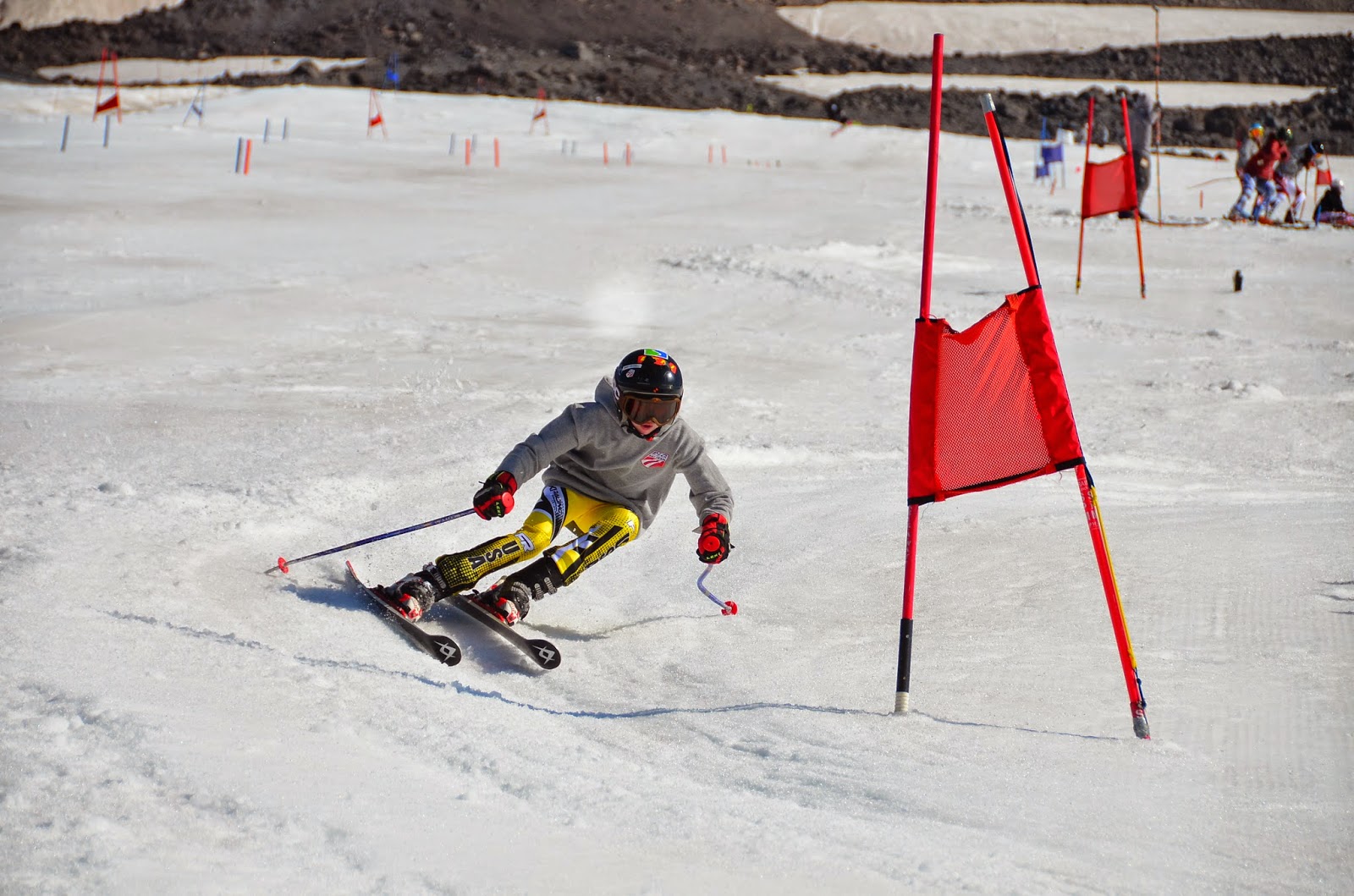Why many good skiers can still improve.
This is a good skier, but his technique is compromising him from becoming a great skier.
He's driving the outside edge with his knee at the end of the arc to get edge hold or grip. This kills rebound from the ski; therefore an extension is necessary to get out of the arc. We do not teach this way of skiing in PMTS; this is a PSIA or instructor based skiing technique.

This is a huge extension still taught in Traditional ski schools, this is one of the basic roots of dysfunctional skiing at high levels. PMTS does not teach an extension of any kind; we develop a long leg by tipping the feet and relaxing and bending the inside leg to tip the ski, we drop the hip inside the arc with flexing, which creates a long outside leg. With the PMTS approach you develop pressure in the arc by the falline, that can be used to release and send you to the next arc. In this TT method of teaching, there is no pressure building in the arc, due to steering, leaning, squaring up the hips, the result is huge knee drive, that is why you see all the hard edge sets at the bottom, with "A" frames and wedge entries to turns. This isn't tipping based technique, used by the PMTS movements, it's a Traditional Technique steering, edging and wedge turn technique.

This is a wedge christie, we don't teach a Wedge Christie at any point in PMTS Direct Parallel. We teach Parallel from the beginning. Any skier at this level should no longer need this movement, it's due to the points I made earlier, it's due to steering, extension, rotation and leaning. These results are not intended by TT skiing, but they are however consequences of TT.
These guys are highly athletic and that's why they can get away with this type of dysfunctional movement. This takes lots of muscle strength, energy and hard hits on the body. That is why regular ski instructors can never learn to ski like this.
Notice the hard hit this skier it taking, he's a good skier, but he's so late with his edge hit, to stop the skid he created by steering, he's buckling at the waist to absorb the shock.
This is a wedge turn, I'm sorry, but if you use TT or PSIA, CSIA movements you will never lose your wedge. If you look closely, you'll see most PSIA examiners, Demo Team and DCLs all have wedge entires to their turns. Why, because they are using an antiquated technique that was never designed for shaped skis. PMTS is derived from World Cup skiing technique. This technique, shown here in these photo clips from this video, in these frames, isn't world cup technique. Anyone can learn world cup technique. We teach in PMTS to intermediates, but they don't stay intermediates for long.
More Wedge turns!
For more information of how to learn PMTS Direct Parallel, look at our web site for more free information and movement instruction at www.Harbski



























